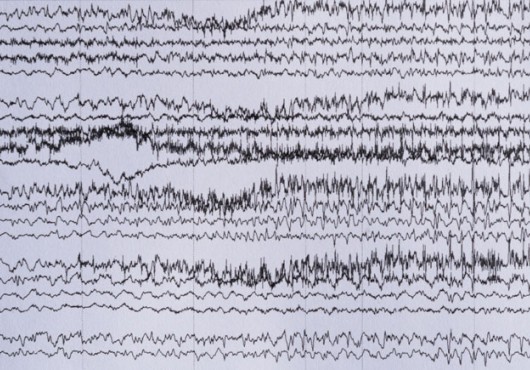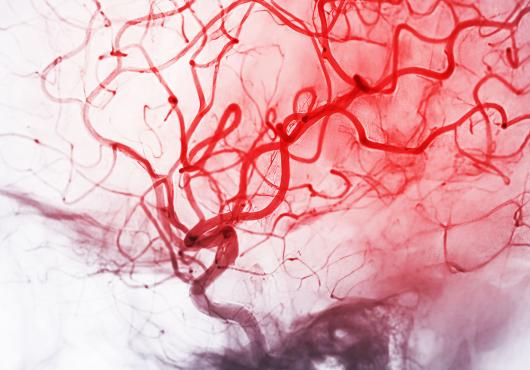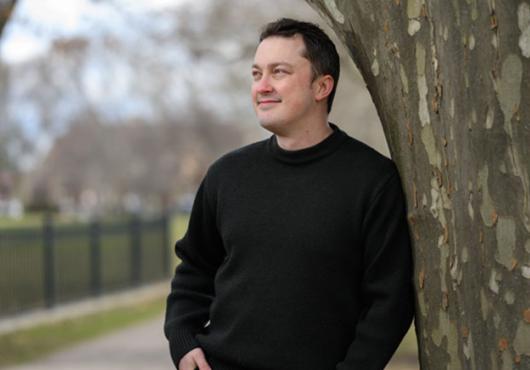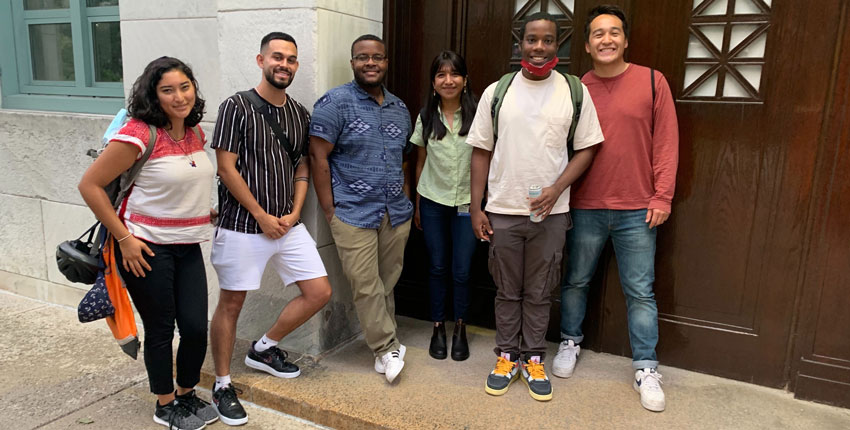
With graduation season fading into summer, the Department of Neurobiology in the Blavatnik Institute at Harvard Medical School is celebrating a significant milestone of its own: the official end of the first year of its Program in Neuroscience Post-Baccalaureate, or PiNBAC.
The one- to two-year program, which launched in July 2021, offers recent college graduates from groups underrepresented in neuroscience the opportunity to conduct research in neuroscience labs at Harvard and gain the professional skills they will need to succeed in graduate school.
“The goal of the program, writ large, is to increase diversity in neuroscience,” said Taralyn Tan, director of education in neurobiology at HMS, who co-leads PiNBAC with Sandeep Robert Datta, professor of neurobiology at HMS.
“There are significant barriers to entry for many underrepresented minorities in terms of getting accepted at a top-flight graduate program,” Datta said, citing, most notably, the need to do intensive research before applying, and the so-called hidden curriculum of the application process.
PiNBAC helps to address these barriers by providing students with a structured curriculum that combines intensive lab research with workshops and courses geared toward professional development.
“Ultimately, we’re trying to give students who would otherwise be turned away at the door a chance to knock,” Datta said.
Transferable research skills
Jabari McGinnis, who is starting his second year in PiNBAC, entered the program to gain more neuroscience research experience before applying to PhD programs. McGinnis completed his undergraduate program at Morehouse College, a historically Black liberal arts school that provided him with a strong foundation of scientific skills and knowledge, he said, but offered limited hands-on research opportunities.
“Coming in, I didn’t know much about a career as a researcher and what graduate school entailed, but now I’ve pretty much worked alongside a graduate student 24/7, and I see what’s expected and what the day-to-day is like,” McGinnis said. “I feel like I’ve learned a lot of transferable research skills that I can take with me.”
Beyond the research, McGinnis said he’s also learned other important skills, such as how to communicate effectively, how to manage his time, and how to take the initiative in asking for help.
He also appreciates being able to connect with the students in his cohort, who, like him, are from groups underrepresented in neuroscience.
“We have a common understanding, and we can touch base on different dynamics within our labs, and talk to each other about our research ideas,” he said.
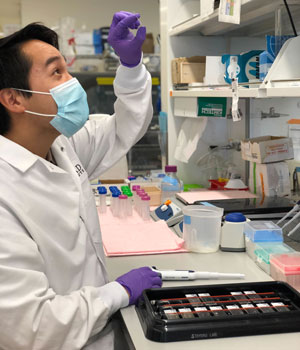
Some of McGinnis’ favorite memories so far were from the day-to-day routines.
“I have little moments here and there where I will go over research papers with grad students or the lab for journal club, and things start to click—I start to understand things more critically and more clearly,” he said.
McGinnis is leaning toward pursuing theory and computation in graduate school, subjects he appreciates for their ability to model and explain complex concepts and to make predictions about neural activity and behavior.
However, he is currently working on mouse experiments in the labs of Bernardo Sabatini, the Alice and Rodman W. Moorhead III Professor of Neurobiology, and John Assad, professor of neurobiology.
Specifically, he and his graduate student mentor, Eden Sayed, are working toward understanding the mechanisms that underlie how the brain initiates voluntary movements.
Data driven
Like many initiatives at HMS, PiNBAC was born out of statistics.
For several years, Datta and Tan had been gathering information on students applying to the HMS PhD program in neuroscience. In doing so, they realized that the number of applicants was drastically increasing, and the bar for doing research prior to applying was getting higher and higher.
In fact, between 2018 and 2020, the number of applicants rose from 402 to 682, and the average prior research experience for admitted students climbed from 26 to 33 months.
The emphasis on research rests on a solid foundation: a 2014 study in Molecular Cell Biology suggests that it is only one of a few metrics that correlates with performance in graduate school.
However, some students, such as those who attend small colleges or institutions that do not have graduate schools, may have strong grades and a deep interest in neuroscience, but limited access to research opportunities during their undergraduate years.
“Every year, we saw students who would be great candidates if they just had a little bit more research—if they just had that one intensive experience,” Tan said.

Around the same time, the neurobiology department had formed the Departmental Committees on Diversity and Inclusion (DCDI) to identify key areas where it could try to increase diversity in neuroscience.
“We wanted to find a way to move the needle in our own community,” Datta said. “HMS has one of the oldest neurobiology departments in the world, so we have this real opportunity to help build a more representative, more diverse leadership class in neuroscience.”
The committee concluded that students from underrepresented groups would be more competitive in applying to PhD programs and more successful in graduate school, if they had more opportunities for research and professional development beforehand.
Creating PiNBAC seemed like an ideal way to give them the skills to succeed.
“The data show that at each transition point, you get a funneling effect, a loss of students from diverse backgrounds, so it’s important to shore up those transition points and provide maximal opportunities,” Tan said.
PiNBAC launched as a specialized track within an existing post-baccalaureate program, the Harvard Graduate School of Arts and Sciences Research Scholar Initiative, which was developed by Sheila Thomas, dean for academic programs and diversity at GSAS.
The inaugural PiNBAC class had seven students, each of whom was placed in a neurobiology lab to conduct research with a faculty mentor. Students were also matched with a PhD student mentor and an additional faculty member to create a “mentorship pod.”
In addition to McGinnis, the students in the program included Jaysen Lara-Jiménez, Elisa Rojas Palato, Berenice Chavez Rojas, David Guarin, Eric Garcia, and Nigel Hunter.
Making the implicit explicit
For Hunter, who also attended Morehouse College but completed a master’s degree in neuroscience there after earning his undergraduate degree, PiNBAC was a no-brainer.
“It was an opportunity to go to a highly competitive school and do research in a well-funded and cutting-edge lab,” Hunter said. “The program has been influential in not only helping me build my scientific skills but also in getting exposure to what top-tier science looks like.”
The community at HMS has been one of his favorite aspects of PiNBAC.
“It is very obvious that the people here care about you and they want to see you succeed—and they are willing to move mountains to make that happen,” he said.
“I’m walking away with mentors, both personally and professionally, that will follow me for the rest of my career,” he added. “I feel like I can text any of these people out of the blue on a random Sunday, panicking, and somebody will answer.”
Hunter, who laughingly comments that he has about 30 experiments waiting to be run, is working on two different projects in Datta’s lab.
One is exploring how the presence or absence of a specific receptor found in the olfactory bulb and the central nervous system affects the development of Alzheimer’s disease. The other is tracking mouse behavior throughout life to create a behavioral baseline that can be used to assess changes in other experiments.
Hunter’s experience in PiNBAC has been so positive, he said, that he will start a PhD in neuroscience at HMS this fall. He plans to continue exploring the intersection of neuroscience, psychology, biology, and behavior.
Hunter and McGinnis agree that for both of them, a highlight of PiNBAC was going to Datta’s house for dinner, where they met his family and got a peek into his life outside the lab. Datta has similarly enjoyed the time that he has spent with the students.
“The students are spectacular. They’re incredibly talented, smart, enthusiastic and engaged, and it’s great to see how fast they’ve all grown as a cohort, and as individuals,” he said. “Interacting with them, hearing about what they’re doing and what they’ve learned, has honestly made all of it worth it. They are going to be the future leaders of neuroscience.”
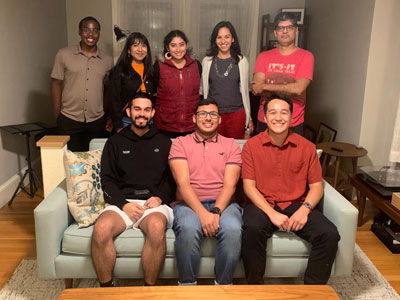
Beyond the research, students took part in orientation sessions designed to prepare them for working in a lab as part of a research team, as well as courses and workshops throughout the year on topics such as how to apply to graduate school, how to transition into a PhD lab, and how to communicate their research.
They also had opportunities to attend department seminars and journal clubs, and to socialize at more informal events, including those hosted by Underrepresented Scholars in Neuroscience.
In the fall, the students will present their research at a symposium, which will offer a chance to show off what they’ve been working on throughout the year.
“We wanted to provide a program that offers students from underrepresented groups in STEM the opportunity to gain intensive research experience in the lab and additional professional development to demystify the hidden curriculum in higher education and in the research lab environment,” Tan explained.
Making the implicit explicit by adding structure, she added, is an important part of promoting equity in higher education.
A bright future
Currently, PiNBAC is working on securing external funding to expand its scope and to include even more labs in the neurobiology department.
Tan is also hoping that PiNBAC can increasingly partner with the broader community of research assistants in neurobiology at HMS, who may also benefit from professional development opportunities.
Post-baccalaureate programs in neuroscience are becoming more common, Datta noted, placing PiNBAC within a broader movement.
However, Tan and Datta consider the program at HMS unique in a few ways. One is the access it offers to top neuroscientists who are experts in a wide array of subdisciplines. Another is the way PiNBAC embeds students in the existing graduate programming at HMS.
Also unique is how PiNBAC—and DCDI as a whole—is taking a data-driven approach to increasing diversity, which includes setting up systems to gather statistics.
For PiNBAC, for example, Tan will track information such as where students are accepted to graduate school and how long it takes them to complete their PhD.
“That puts us in a position to evaluate our targeted interventions and programs to see if they are actually working, and to see if we are actually moving the dial,” Tan explained.
In the long term, Tan and Datta share a goal of building a more diverse neuroscience community at HMS that can lead the way for the entire field.
“We want to do what we can to make sure that the people who are articulating the vision of what neuroscience is going to be for the next 50 years represent the broader community,” Datta said.
